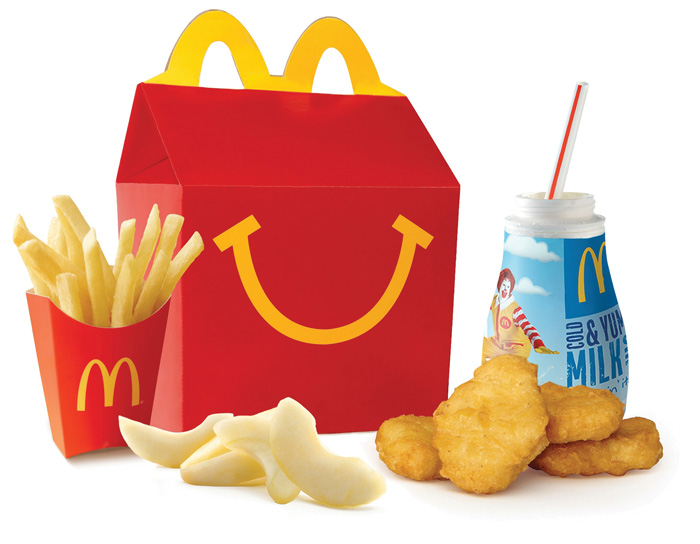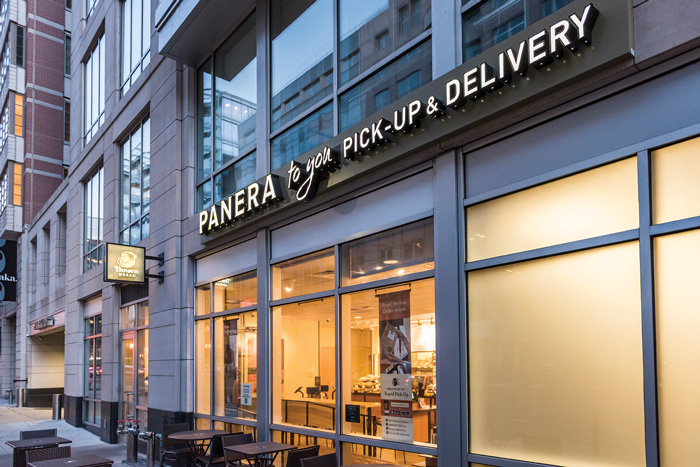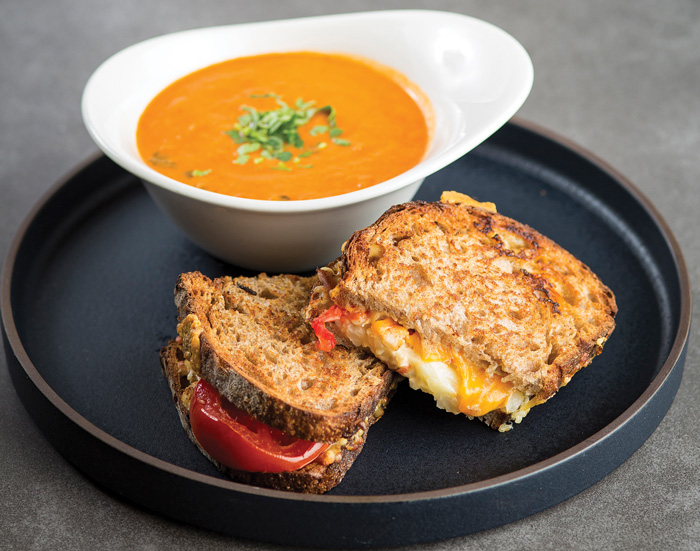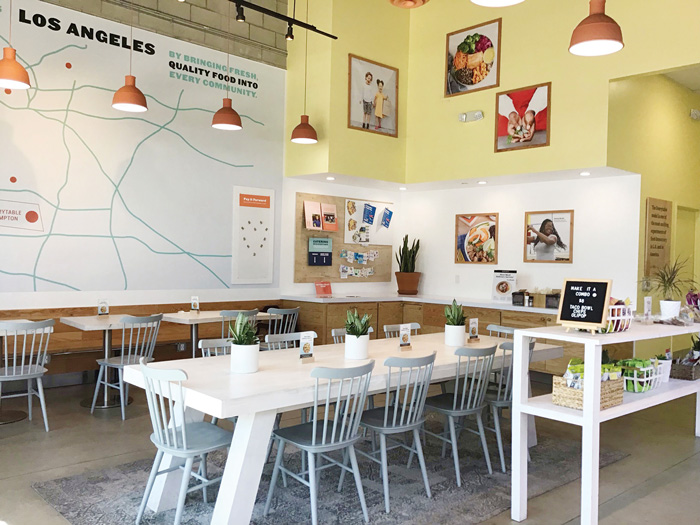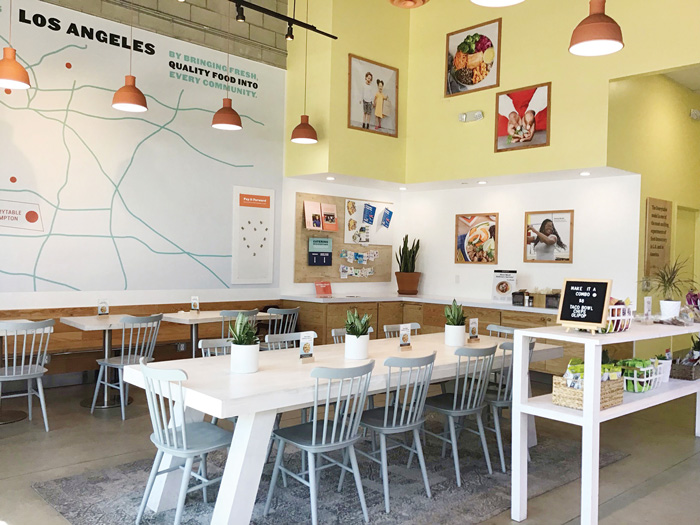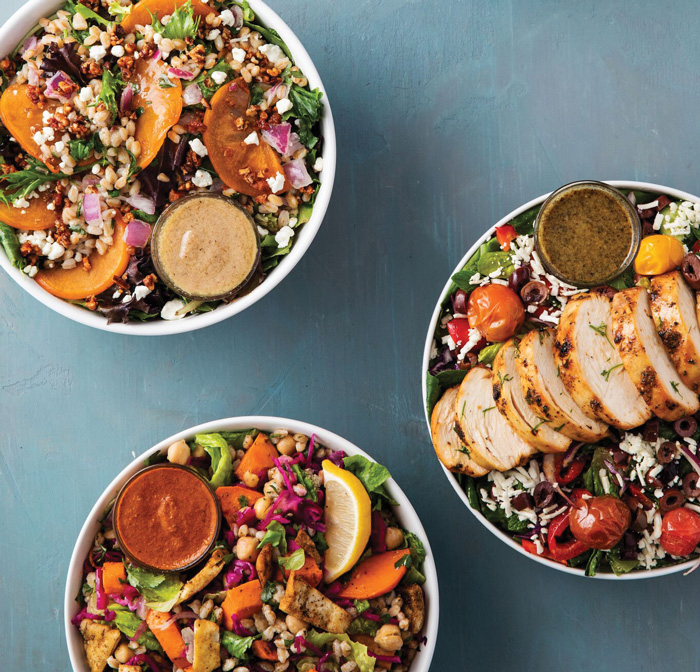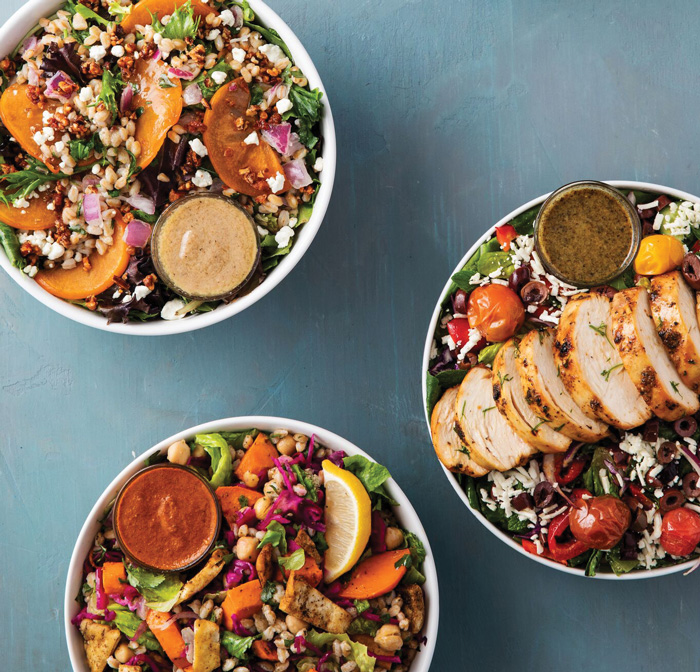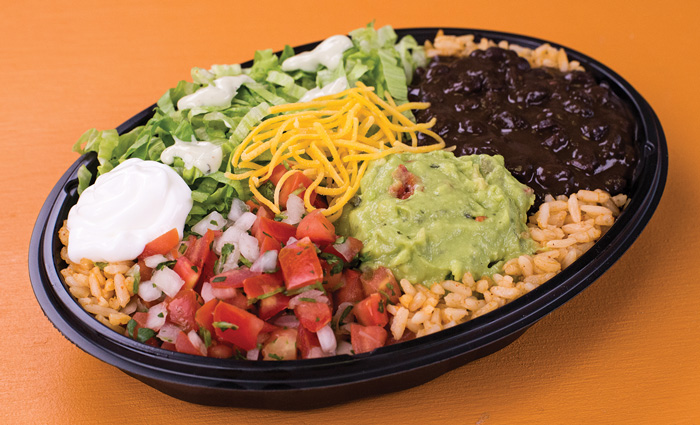
Fitter Fare for Foodservice
COVID-19 has upended the foodservice industry, but quick-service and fast-casual restaurants are still seeing interest in better-for-you menu options.
Article Content
In its 2020 State of the Restaurant Industry report, the National Restaurant Association (NRA) brims with optimism about the restaurant industry in general, the quick-service and fast-casual sectors in particular, and the demand for better-for-you menu options. According to this report, 79% of adults are more likely to visit a restaurant that offers healthy menu options, with baby boomers most inclined to hold this sentiment.
“A majority of operators across all segments are planning to add new items specifically identified as healthy or nutritious,” the NRA report states. “Many operators are also planning to add new vegetarian or gluten-free items and healthy kids’ options in 2020.”
As Hudson Riehle, the NRA’s senior vice president–research, points out, “Four out of five American adults are choosing healthy menu options. And nine out of 10 are paying more attention to nutritional content.”
But the NRA conducted its research before the COVID-19 pandemic upended the restaurant industry, with state-imposed lockdowns and shelter-in-place orders forcing many operators to close or restrict themselves to drive-through, delivery, or takeout formats. Although no type of foodservice operation has been unscathed by the spread of the novel coronavirus, many quick-service and fast-casual restaurant chains have been able to adapt to mandates prohibiting customers from dining in.
Are restaurant patrons less likely to choose healthful menu items during the pandemic? The concept of “healthy food” has always been fluid, and today’s priorities are having an impact on how consumers define “good for you,” say industry analysts.
“In mid-March, we asked what consumers’ top considerations for selecting a restaurant were, and the No. 1 answer was that the operator be clean and sanitary,” notes Mike Kostyo, a trendologist with Datassential. “That was the first time that sanitation ever trumped taste in our research.”
In addition, affordability has become essential, with the economy tanking and a recession looming. Although fresh and clean label foods have become more commonplace in quick-service restaurants—with McDonald’s Corp., for example, announcing that its seven classic burgers contain no artificial preservatives, colors, or flavors (except for the pickles)—consumers often end up paying more for organic, vegan, gluten-free, and other free-from choices, whether in a restaurant or a grocery store.
“It’s hard to project a couple of weeks out, let alone a couple of months out, but I think people’s view of what equals healthy is definitely going to change,” says Jessica Foust, vice president of culinary innovation and nutrition for The Food Group. “It’s going to be influenced by their budgets and the availability of ingredients. And when we go into a recession, people often gravitate toward comfort food because emotional health becomes equally important to nutritional health.”
U.S. consumers clearly shifted to familiar favorites at the beginning of the pandemic. “As in any time of uncertainty, consumers turned to comfort foods in a big way,” Kostyo says. “In fact, according to our post-COVID-onset research, the No. 1 thing they wanted was pizza.”
However, as the lockdown has dragged on, people have become more concerned about the adverse health effects of staying home. And as public health experts continue to note the higher death rates from COVID-19 for individuals with chronic health problems—including diet-related conditions such as obesity, diabetes, and cardiovascular disease—consumers may once again be turning their attention to wellness and nutrition.
“As things level out and normalize a bit, we’ll likely see consumers start to choose healthier options again,” Kostyo says. “That’s particularly true as they are stuck at home, may feel more sedentary, and are possibly in charge of every meal and the health of their whole family.”
Some health-focused, mission-driven restaurateurs, however, contend that interest in their better-for-you menus has not abated during the crisis, though they’ve had to close certain locations and concentrate on meal delivery and takeout.
Plant-Based Embraced
“Plant-based proteins are the hot ticket this year,” began the NRA’s What’s Hot 2020 Culinary Forecast. Indeed, “plant-based proteins” ranked second only to “eco-friendly packaging” in the association’s latest research on foodservice trends. Because the definition of “healthy” has broadened in many consumers’ eyes to include planetary health, the “plant forward” and sustainability trends are practically inseparable. After all, a key reason that many younger flexitarians cut back on meat consumption and that vegans eliminate all animal products from their diet is the view that the meat industry causes environmental harm.
Research by Datassential also highlights the rise in plant-derived meals at restaurants. “Every year, we track which dishes, ingredients, and flavors grew the fastest from the previous year; and in 2019, the top four spots were taken up by plant-based options, including multiple plant-based burger brands,” Kostyo says, acknowledging that he has been taken aback by the growing popularity of meat analogues at traditional fast-food outlets. “These options went from futuristic and ‘out there’ to the menu at major chains like White Castle and Burger King in a surprisingly short period of time.”
White Castle’s Impossible Slider and Burger King’s Impossible Whopper are both iterations of Impossible Foods’ Impossible Burger, made from textured soy protein and a number of other ingredients, including soy leghemoglobin, which enables the patties to mimic the bleeding and flavor of beef. While White Castle and Burger King rolled out their plant-based burgers at all of their U.S. locations last year, McDonald’s is still test-marketing a version of Beyond Meat’s Beyond Burger at 50-plus restaurants in Ontario, Canada. The P.L.T., as it is called (for plant, lettuce, and tomato), is a blend of pea, mung bean, and rice proteins.
Similarly, in late 2019, Dunkin’ became the first quick-service restaurant chain to offer Beyond Meat’s Beyond Breakfast Sausage nationwide (Beyond Meat 2019). Dunkin’s Beyond Sausage Sandwich includes proprietary seasonings as well as pea protein, refined coconut oil, inactivated yeast, rice protein, apple extract, pomegranate extract, beet juice extract (for color), and other ingredients plus vitamins.
Although they generated a lot of excitement when introduced, these products have triggered considerable controversy: for being what some characterize as highly processed; for not being vegan because they are often topped with cheese or, in the case of the Beyond Sausage Sandwich, both egg and cheese; for sharing a grill with meat products; and for being just as high in calories as their real meat counterparts.
“What has led a lot of brands to embrace plant-based items is that most consumers still associate plant-based with healthier,” Foust says. “So the rise, especially in plant-based burger substitutes, has been significant. However, pre-COVID, there was beginning to be some acknowledgment from consumers that these products aren’t always healthier. When consumers look at the menu labeling and see that the Whopper and its plant-based counterpart have the same caloric density, they start to scratch their heads and wonder, ‘Is this really better for me?’” In addition, Foust notes, when consumers look at what’s in these burger substitutes, they see a very long ingredient list compared with what’s in 100% beef burgers.
Although grocery sales of meat alternatives grew during the pandemic, driven in part by meat and poultry shortages due to plant closures related to COVID-19 (Sternlicht 2020), foodservice consultant Maeve Webster, president of Menu Matters, believes that interest will wane in meat substitutes that attempt to replicate the look, texture, and taste of meat. “After months of uncertainty and anxiety, the unknown will become uncomfortable, and we’ll likely see a continued backlash against analogue products that rely too heavily on lab-based ingredients and production,” she says. “‘Let plants be plants’ will be the motto going forward.”
Webster anticipates a resurgence in “old school” plant-based burgers, “meant to be enjoyed for their own merit and based on ingredients consumers will recognize: beans, vegetables, and grains.” She also thinks pulses—including chickpeas, lentils, black beans, and adzuki beans—will become increasingly popular for their own unique flavor and nutritional profiles.
In their report Shifting Sands: Trends Shaping the Food Industry in 2020/21, Culinary Tides and Menu Matters note that fruit has not received as much attention in recent years compared with vegetables and grains. But that is changing. “In part, fruit is grabbing the spotlight thanks to the continued—and likely accelerated—rise in interest in functional foods, as many heirloom, common, and exotic varieties offer extensive health benefits,” the report states. “As with vegetables, heirloom varieties will gain greater notice as we’ve seen happening over the past year or more with apples.”
On the Whole
Not surprisingly, main dishes and side dishes of vegetables, fruits, and grains are much more likely to be found on fast-casual restaurant menus than on those of national fast-food chains. In fact, a number of fast-casual eateries today offer abundant healthful selections as well as more indulgent options. At Panera Bread, for example, patrons can order a large portion of BBQ Chicken Mac & Cheese, listed at 1,200 calories, and a Pepsi. But healthy choices are plentiful on the Panera menu, too. Panera offers warm grain bowls; a variety of salads, including Strawberry Poppyseed, Fuji Apple, Asian Sesame, and Modern Greek with Quinoa; and fruit-based cold beverages such as Blood Orange Lemonade, Prickly Pear Hibiscus Fresca, and a Peach & Blueberry smoothie. All of the chain’s sandwiches can be ordered with whole grain bread—with fruit instead of chips on the side.
But increasingly, fast-casual establishments are being built from the ground up with a wellness agenda. CoreLife Eatery, for one, specializes in bowls of grains or greens, freshly made bone broth–based and vegetable-based soups, and “power plates” with healthy sides. The chain doesn’t serve soft drinks and touts that the chicken and grass-fed beef incorporated into some dishes are antibiotic- and hormone-free. The grain bowls include Sriracha Ginger Tofu & Ancient Grains, Spicy Thai Chicken & Rice Noodle, and Tuna Poke Grain, among others, while the power plates feature a grilled protein topped with a sauce and side dishes of rice and grilled vegetables. The Spicy Chicken plate, for instance, consists of Thai chicken, purple rice, roasted beets or roasted sweet potatoes, falafel, spinach, pickled red onions, spicy Sriracha sprouts, and chicken bone broth, with Thai chili sauce suggested as a topping.
“The way we look at healthy eating, it’s more about whole foods and clean ingredients. It’s really more inclusive than exclusive,” says Todd Mansfield, co-owner of CoreLife Eatery. “In operating a restaurant, we have to think about taste before we can think about anything else. Then we ask ourselves, ‘How can we make this more consistent with a healthy meal, either with portion size or ingredient selection?’ It’s about the ingredients going in, the portion size, and putting the variables all together so these become really nutritious meals.”
Founded in 2015, CoreLife Eatery now has more than 50 locations in six states, from North Carolina to Illinois to Utah, half of which are owned by franchisees. The company’s expansion plans have been slowed only temporarily by the pandemic, Mansfield shares, noting that most of the locations have remained open for takeout and curbside delivery.
“We seem to be getting bigger week by week,” he says. “Our sides are becoming more and more popular, and people are exploring the menu a little deeper. A lot of people are thanking us for being open because they do want to eat something healthy and they don’t want to always have to cook it themselves in the oven. That has been a real positive for us.”
Championing healthful lifestyles, not just better-for-you meals, CoreLife Eatery forges partnerships with fitness and wellness organizations in the communities it serves. “We reach out to people who have a common mission, whether it be yoga, CrossFit, or mindfulness,” says Scott Davis, the chain’s president and chief concept officer. What’s more, every year the company holds its CoreLife Challenge—a social media–promoted event urging customers to make a 21-day commitment to reduce sugar, fat, and other substances in their diet; exercise more; and take steps to relieve stress and make other improvements to their emotional health.
LYFE Kitchen, a three-restaurant fast-casual chain in Chicago, similarly focuses on preparing fresh, wholesome, and healthful, yet delicious, food. Owned by L3 Hospitality Group, the chain derives its name from the acronym for “Love Your Food Everyday.”
Skip the Sacrifice
“‘Healthy eating’ has become such a broad term, and we’re always talking about what it means for us,” says Emily Paulsen, L3 Hospitality’s director of marketing and sales. “A big part of the LYFE Kitchen core brand has always been that eating healthfully does not mean sacrifice—that you should not be sacrificing the dishes and the flavors that bring you comfort and joy. Our mission has been to create flavorful, functional foods that taste amazing while you’re eating them and that leave your body feeling fulfilled and nourished for hours after.”
Salads, bowls, tacos, and sandwiches make up a large portion of the LYFE Kitchen menu. The salad lineup includes the Superfood Salad, which contains organic chopped kale, roasted sweet potatoes, pickled red onion, sprouted buckwheat, raw pepitas, a toasted pecan almond crunch topping, and tahini Dijon vinaigrette. Called the Mediterranean Chop, another salad features organic chopped romaine, arugula, local tomatoes, toasted falafel almonds, feta, lemon and dill chickpeas, red onion, pepperoncinis, cucumber, and red wine vinaigrette. The Mediterranean Halloumi Bowl, in turn, consists of grilled high-protein halloumi cheese, red lentils, roasted cauliflower, local tomatoes and red onions, house-made chimichurri, and herb aioli. The wide selection of beverages ranges from Hot Ginger Tonic to Strawberry Beet Smoothies to Lavender Lemonade.
A big part of LYFE Kitchen’s health-oriented mission is to use high-quality local ingredients whenever available, Paulsen points out. “We work with over 20 local growers, bakers, makers in and around Chicago to source those ingredients as close to home as possible,” she says. “We also utilize as much organic produce as we can. And we never use artificial ingredients or sweeteners.”
LYFE Kitchen also bans monosodium glutamate from its restaurant kitchens and uses color-coded separate sets of cookware to prevent cross-contamination and ensure the integrity and safety of vegan dishes, gluten-free dishes, and nut-free dishes.
To create new recipes, LYFE Kitchen pairs newly trending ingredients with “craveable staples,” Paulsen says. For example, she notes that ashwagandha—a mushroom-derived adaptogen said to reduce anxiety and stress—is trending in the “hyper-wellness community” right now. LYFE Kitchen will introduce such functional ingredients to its customers through fun and tasty recipes.
During the COVID-19 pandemic, LYFE Kitchen has temporarily closed two of its restaurants to focus on one located in Northwestern Memorial Hospital that is doing a brisk business in takeout and delivery. The company has given away free coffee and meal vouchers to health-care staff and has encouraged its longstanding customers to “pay it forward” by purchasing LYFE Kitchen meal vouchers for those on the front lines of the pandemic.
Affordable and Global
Americans may be turning to comfort food during this time of intense stress, but that doesn’t just mean cheeseburgers, meatloaf, and macaroni and cheese. “After decades of expanding food comfort zones, what constitutes a comfort food has shifted to include global options,” Webster observes. This is especially true in ethnically diverse locales, such as many of the neighborhoods served by Everytable, a unique Los Angeles–based fast-food concept chain founded in 2015.
As stated on its website, Everytable’s mission is “to make nutritious, fresh food affordable and accessible to all.” Through the company’s differential pricing strategy, locations in economically disadvantaged areas such as the Watts neighborhood and Compton, Calif., charge less for meals than those in more affluent communities. The chain’s nine-and-growing retail locations are served by a central kitchen. The stores offer grab-and-go packaged meals that can be heated and eaten on-site when California’s restaurants are fully open for business.
With a total of $2.5 million in investment funding from the Annenberg Foundation and the California Wellness Foundation, Everytable plans to open 25 franchise locations to be owned by “entrepreneurs of color,” furthering the vision of cofounder and CEO Sam Polk, who wants to eliminate food deserts (Jennings 2020).
Among its many internationally inspired items, Everytable’s menu features a Vietnamese Noodle Salad, consisting of lemongrass tofu, Romaine lettuce, rice noodles, pickled carrots, cucumbers, fresh herbs, and soy ginger dressing, and Jamaican Jerk Chicken, with coconut grains and beans, collard greens, sweet plantains, and jerk barbecue sauce.
“We really try to make sure that our menu reflects the diversity and the vibrance of the communities that we serve,” says Monica Rutkowski Grippo, Everytable’s director of marketing.
She notes that Everytable’s best-selling dishes are two “warm bowls”: Trap Kitchen Curry Chicken, a Jamaican-style curry chicken with roasted Yukon Gold potatoes, roasted carrots, brown rice, baby spinach, and curry onion gravy, and the more recently launched Turkey Taco Bowl, which includes seasoned ground turkey, roasted corn salsa, white cheddar cheese, black beans, brown rice, chili-lime crema, and fresh cilantro.
“Our Turkey Taco Bowl is very simple, and it’s so delicious,” Rutkowski Grippo says. “That’s the core of what we’re trying to do. We’re taking very basic whole ingredients but adding spices and homemade sauces to make them very indulgent and satisfying.”
Everytable keeps its prices to $5 to $7, depending on the item; prices in financially better-off communities are a couple of dollars more at most, according to Rutkowski Grippo.
It can be a challenge to source high-quality ingredients and maintain reasonable prices, she says, but Everytable is fortunate to be able to buy “upwards of 80% or 90%” of its produce from California growers, depending on the season. Never-theless, “we have to keep our fingers on the pulse of what different ingredients cost at any given time, so we can keep our dishes as low-cost as we can,” Rutkowski Grippo notes. “Sometimes that means choosing to swap out a protein that we initially wanted to use because it would have been delicious. But we also want to make sure that our food is as affordable as possible.”
In addition to its stores, Everytable has a subscription meal-delivery service. As a result of COVID-19, that part of the business has taken off exponentially, as the company has gotten grants to provide meals to elderly senior citizens and other low-income individuals in the Los Angeles area. “This has been a tremendous shift,” says Rutkowski Grippo, noting that Everytable is on target to deliver a million meals in three months and recently moved from a 5,000-square-foot to a 20,000-square-foot central kitchen. “We feel we are called right now more than ever before to fulfill our mission because so many people are in need of food.”
Something for Everyone
Most national fast-food chains, in contrast, need to please a broader and more mainstream customer base. Still, over the past several years, they’ve tried to make their menus more and more healthful. For example, many of the enhancements to McDonald’s Happy Meals began in 2013, when the company joined forces with the Alliance for a Healthier Generation on a set of commitments to increase families’ access to fruit, vegetables, low-fat dairy, and water in 20 major markets by 2020. “Through these changes, we’ve served more than 3.4 billion fruit, low-fat dairy, and water options in U.S. Happy Meals since 2013,” observes a McDonald’s spokesperson.
In 2018, McDonald’s launched its “Global Happy Meals Goals,” which include global nutrition criteria for Happy Meals for the first time. “Specifically, we’re focusing on offering more balanced meals, simplifying ingredients, providing transparent nutritional information, and marketing our food responsibly,” says the McDonald’s spokesperson. The company’s latest healthful menu introduction for Happy Meals is a reduced-sugar, low-fat chocolate milk launched in January 2020.
In recent years, Taco Bell has earned kudos for being one of the healthiest fast-food chains (Taylor 2016). “For us, it’s not about touting Taco Bell as having a health halo per se, but rather about making it easier for customers to understand what’s in our food and make informed decisions,” explains Missy Schaaphok, Taco Bell’s manager of global nutrition and sustainability. “We believe that everyone has the right to bold flavors delivered at an incredible value, which is why we pride ourselves on being a place where every type of lifestyle can find exactly what they’re craving. Everything on the Taco Bell menu can be customized, so fans can make any item fit their needs, whether that’s vegetarian, keto, low-calorie, or otherwise.”
Schaaphok notes that in 2005, Taco Bell was the first quick-service restaurant chain to post ingredient statements and full nutritional information online. “Since then, we’ve reduced sodium, removed all artificial flavors and colors, switched to cage-free eggs, removed antibiotics important to human medicine in our chicken, and much more,” Schaaphok says. “For fans looking for items lower in calories and fat, simply order items ‘Fresco Style,’ which replaces mayo-based sauces, cheeses, reduced-fat sour cream, and guacamole on almost any menu item with freshly prepared pico de gallo. Customers looking for a high-protein bowl under 510 calories can check out our Power Menu.”
The trends the NRA predicted for 2020, such as the rise of specialty burger blends, may come to fruition later than expected, thanks to the pandemic. But there is no turning back changes to the American palate. “Americans are more knowledgeable about different cuisines, seasonings, and spices than ever before,” notes the NRA’s Riehle. And as food industry trendologists observe, the growing passion of many consumers for wellness and the environment will likely survive the COVID-19 global health and economic emergency.
REFERENCES
Beyond Meat. 2019. “Dunkin’s Beyond Sausage Sandwich Available Nationwide!” https://www.beyondmeat.com/whats-new/dunkins-beyond-sausage-sandwich-available-nationwide-nov-6th/.
Jennings, L. 2020. “Everytable Wins $2.5 Million Investment to Recruit Franchisees of Color from Underserved Areas.” Restaurant Hospitality, Jan. 29. https://www.restaurant-hospitality.com/owners/everytable-wins-25m-investment-recruit-franchisees-color-underserved-areas.
Sternlicht, A. 2020. “Alternative Meat Sales Soar Amid Pandemic.” Forbes, May 5. https://www.forbes.com/sites/alexandrasternlicht/2020/05/04/alternative-meat-sales-soar-amid-pandemic/#1a9b8776edfd.
Taylor, K. 2016. “Taco Bell Has Subtly Become One of the Healthiest Fast-Food Chains.” BusinessInsider.com, Feb. 23. https://www.businessinsider.com/taco-bell-as-a-healthy-fast-food-chain-2016-2.


